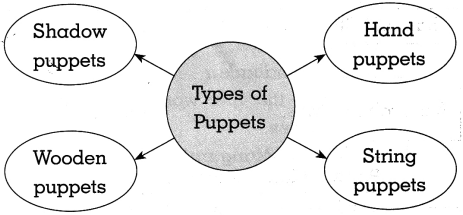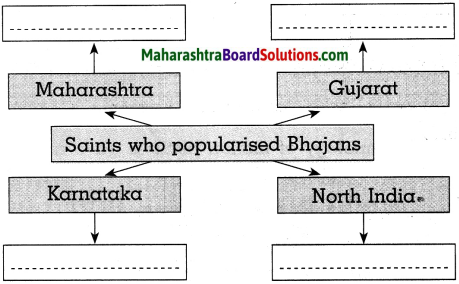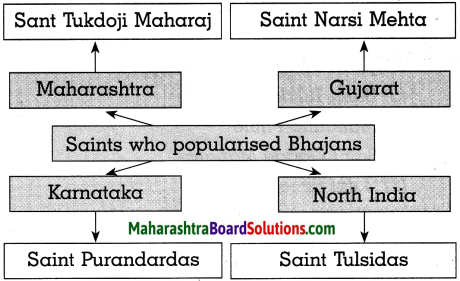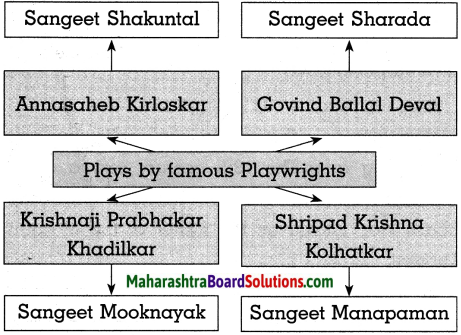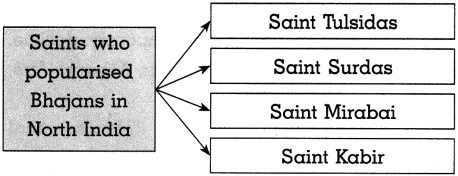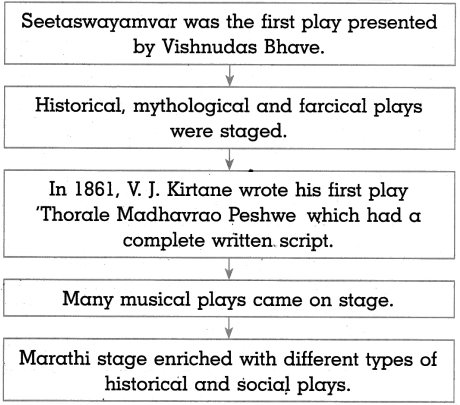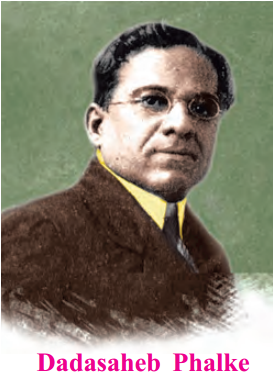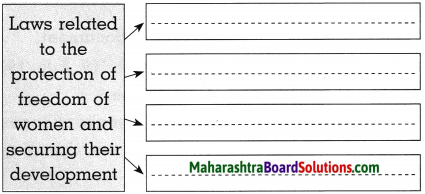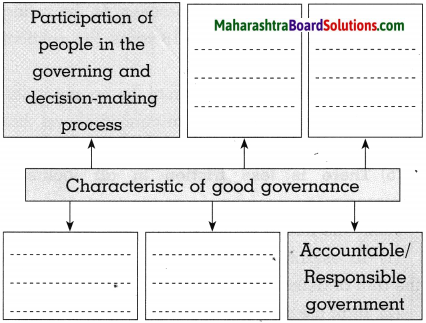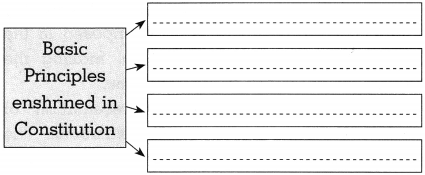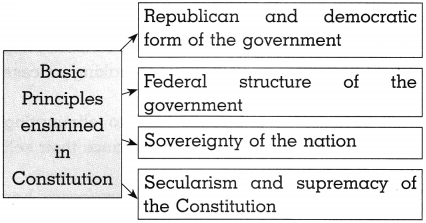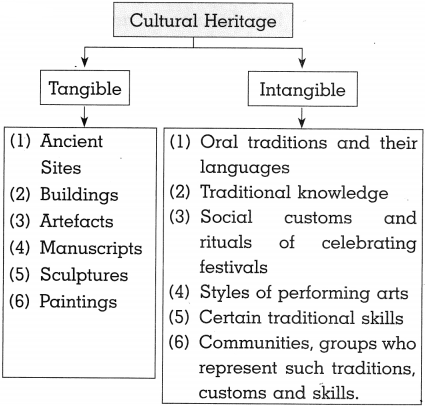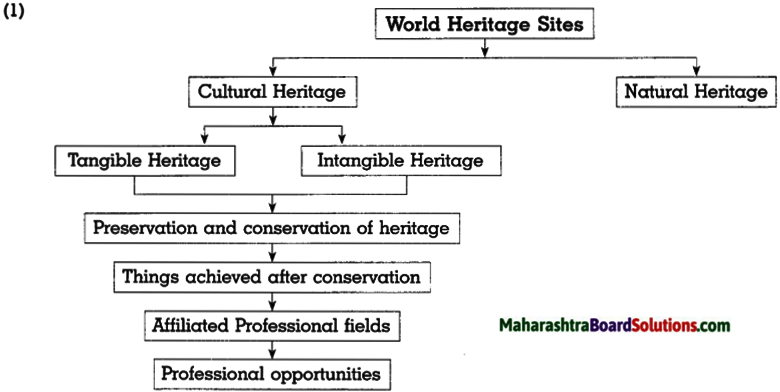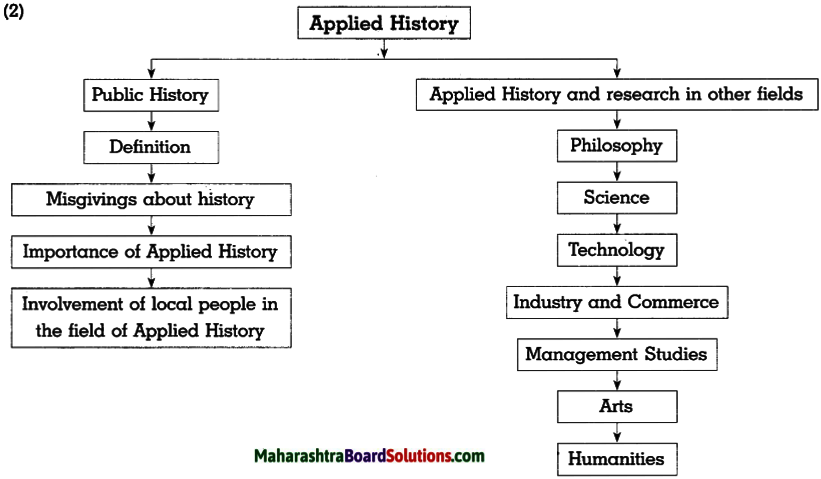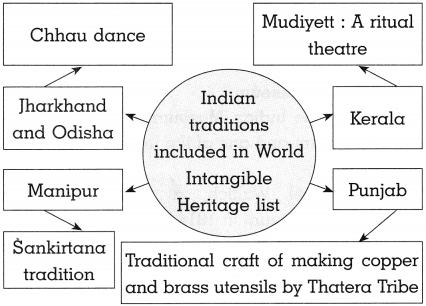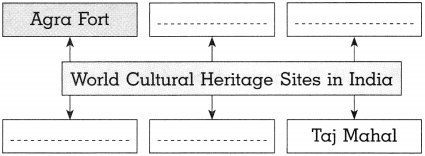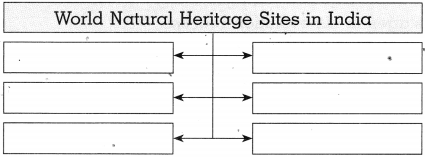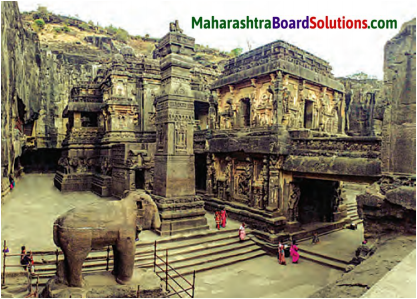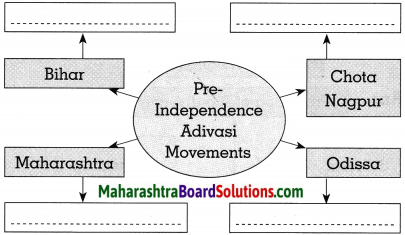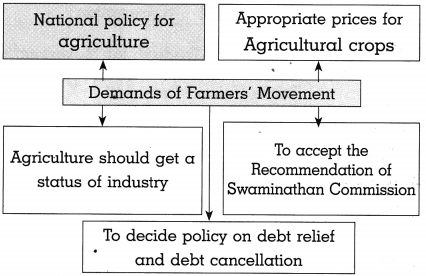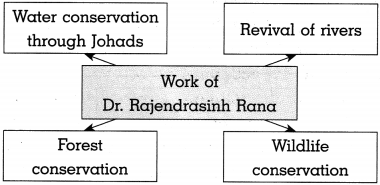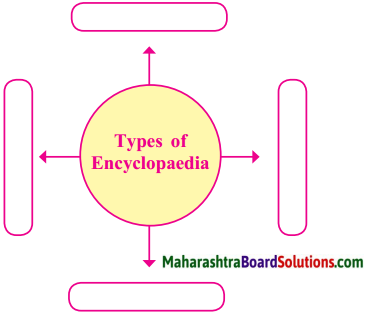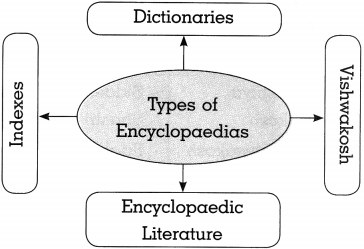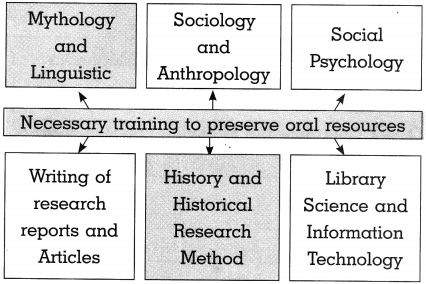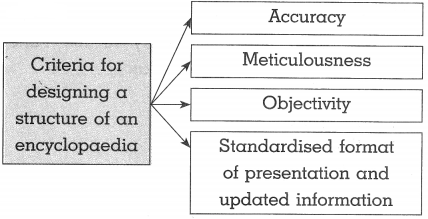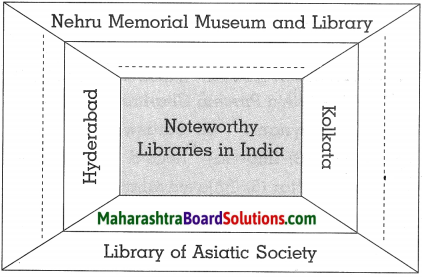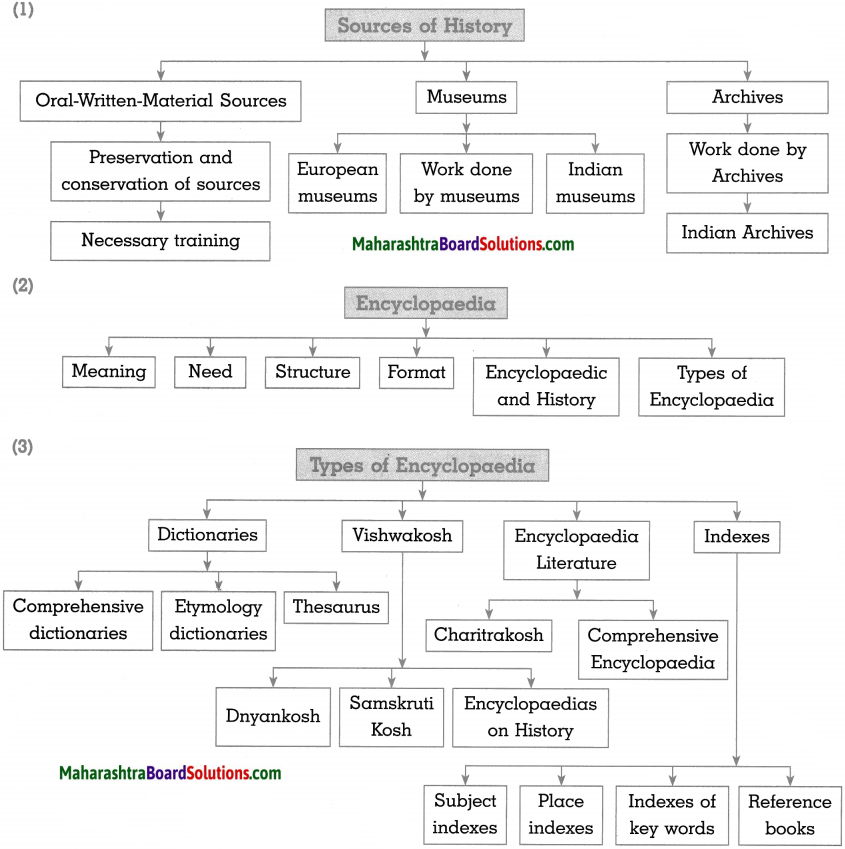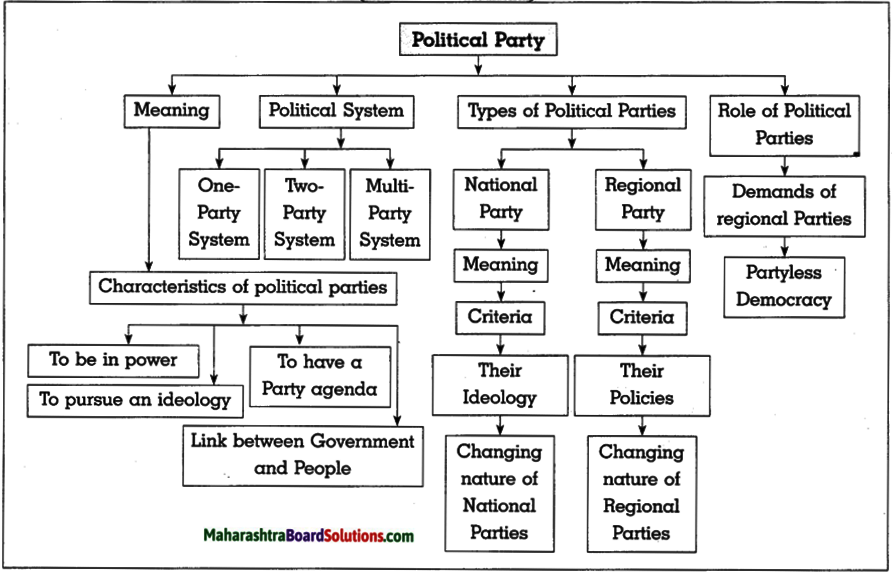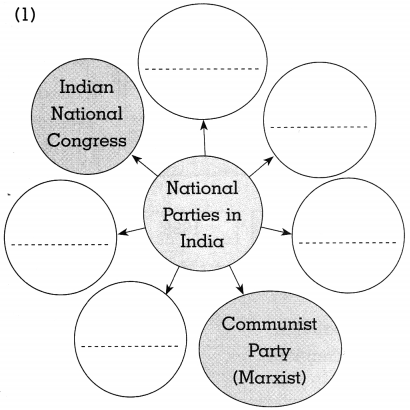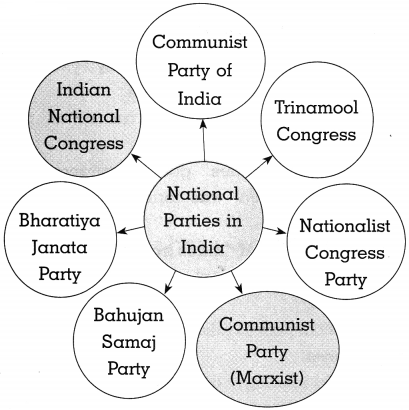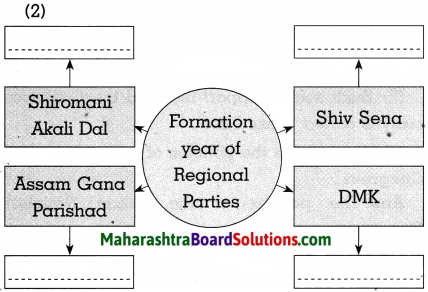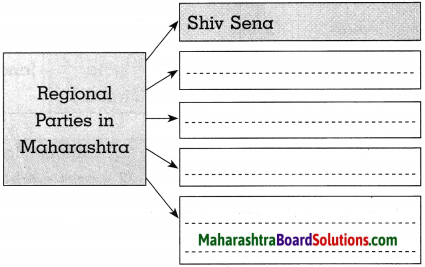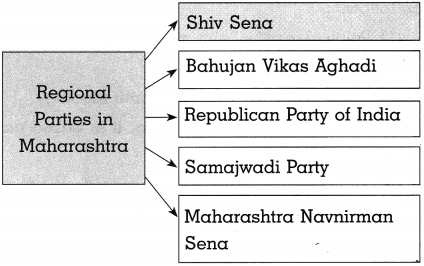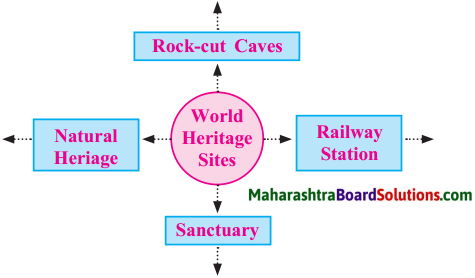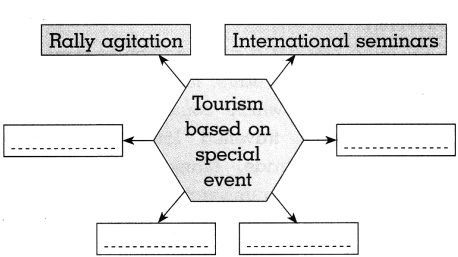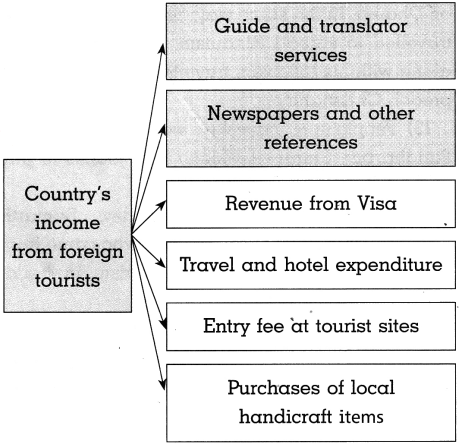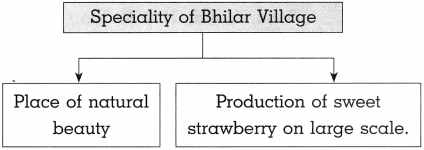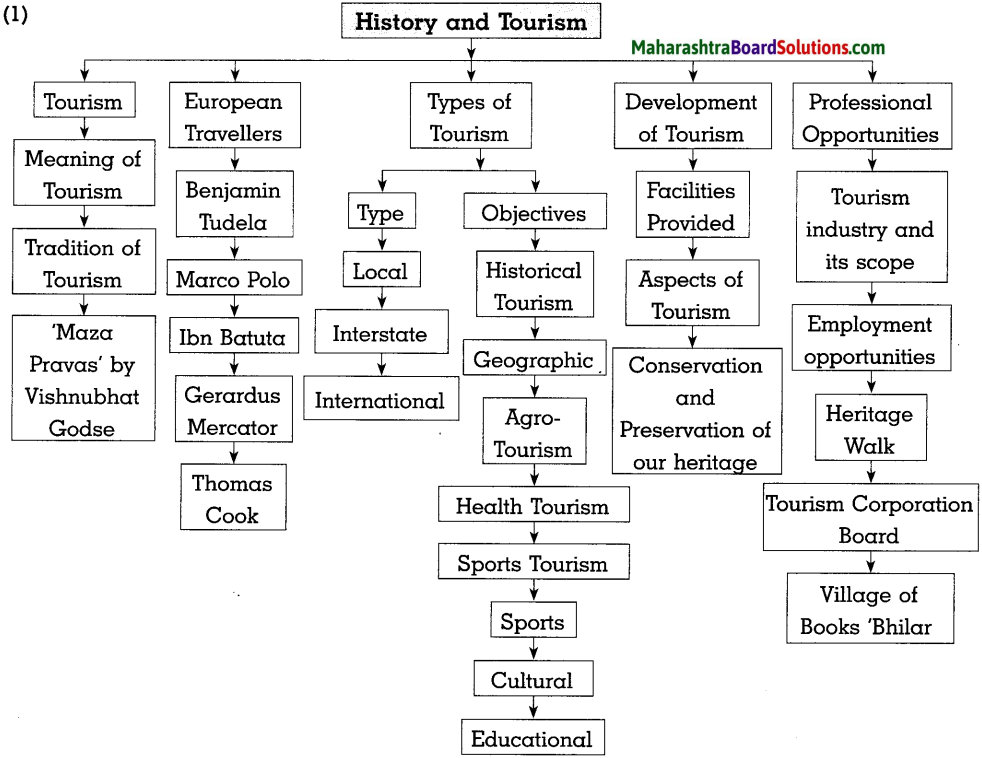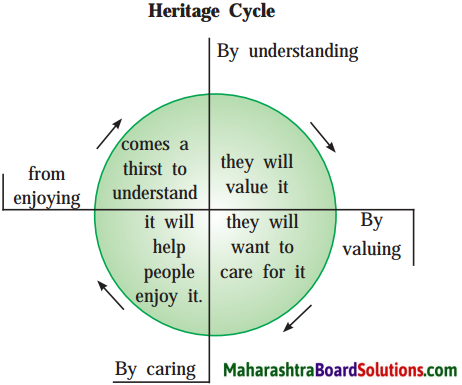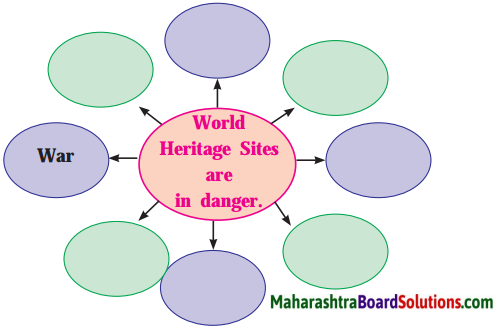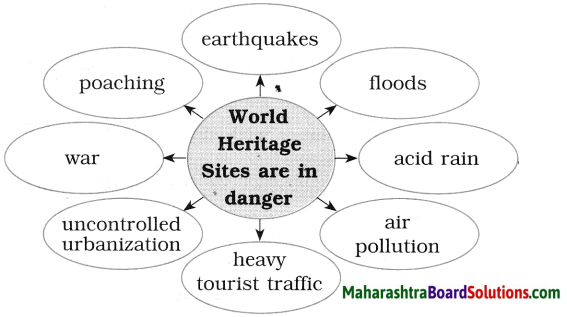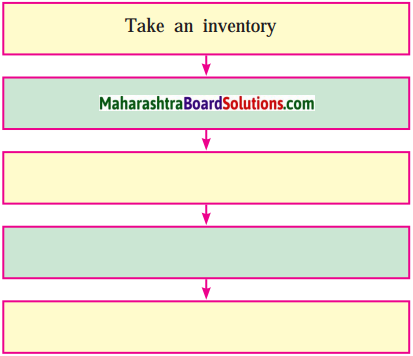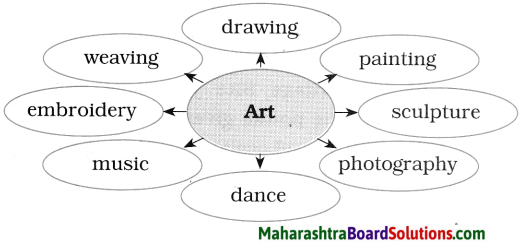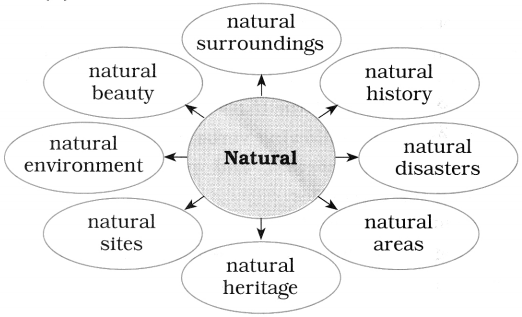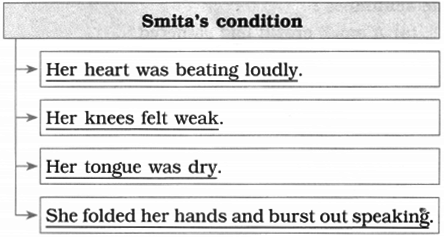Balbharti Maharashtra State Board Class 10 Political Science Solutions Chapter 5 Challenges faced by Indian Democracy Notes, Textbook Exercise Important Questions and Answers.
Maharashtra State Board Class 10 Political Science Solutions Chapter 5 Challenges faced by Indian Democracy
Question 1.
Choose the correct option from the given options and complete the sentences.
(1) In a democracy …………………….. participate in elections and get political power.
(a) political parties
(b) courts
(c) social organisations
(d) none of the above
Answer:
(a) political party
![]()
(2) The major challenge faced by all democratic nations in the world is ……………………. .
(a) Religious conflicts
(b) Naxal activities
(c) Deepening the roots of democracy
(d) Importance to muscle power
Answer:
(c) Deepening the roots of democracy
Question 2.
State whether following statements are true or false. Give reasons for your answer.
(1) Alertness is required to sustain democracy.
Answer:
The above statement is True.
- In order to make democracy successful it should be practised by people in all aspects of their life. It should not remain limited at the government level.
- Conscious effort should be taken to keep the rights of the people intact.
- The different challenges faced by democracy like corruption,violence and criminalisation should be tackled timely and strictly. It is necessary that people and the government should remain alert for the sustenance of democracy.
(2) Importance of the problems of farmers and tribals has increased in the left extremist movement.
Answer:
The above statement is False.
- Landlords confiscated lands of farmers and tribals.
- Naxalite movement was started to remove injustice against the landless farmers and tribals.
- But later the problems of farmers and tribals lost its focus and became violent.
- They adopted violent ways like to attack army, police and oppose the government.
- The importance of farmers and tribals decreased in the leftist movement.
(3) People may lose confidence in the democratic process due to corruption during elections.
Answer:
The above statement is True.
- In order to strengthen democracy, it is important to conduct elections in a free and fair atmosphere.
- There are instances of .the election process getting affected by corruption.
- Bogus voting, bribing the voters, abducting voters and ballot boxes, distributing articles to lure voters and other such things take place.
- All these things make people lose faith in the democratic process.
![]()
Question 3.
Explain the concept.
(1) Left-extremism
(2) Corruption
Answer:
- It is a form of dishonest or unethical conduct for personal gain by people at influential position.
- It is found at all levels economic, political, social and at government levels. The misuse power is also corruption.
- Bogus voting, giving bribe to voters, are examples of corruption in the election process.
- Hoarding of goods and then selling them at price more than the market yalue is also a way of corruption.
- Corruption in the public and private sector is the biggest problem in India.
- People develop distrust and dissatisfaction about the entire system. They lose trust in democracy because of corruption.
Question 4.
Answer the following questions in brief.
(1) Which factors are required for the success of democracy in India?
Answer:
The following factors are required for the success of democracy in India:
- Though democracy is the government of majority the opinions of minorities, religious, ethnic and lingustic should be included in the decision-making process.
- Stringent laws must be implemented to stop criminalisation of politics.
- Efforts should be made not only at the level of the government but also at social and personal level.
- Decisions about important public policies should be taken after interaction with the people.. Participation of people should increase in all government undertakings.
(2) What are the effects of criminalisation of politics?
Answer:
The following effects are seen due to criminalisation of politics:
- Money and muscle power gets undue importance.
- Violence increases during elections and it becomes difficult to hold elections in free and fair environment.
- Terror seizes the mind of people and their participation becomes less in administration.
- People lose their tolerance and the development of democracy does not take place.
(3) What efforts are undertaken to bring transparency in political process?
Answer:
The following efforts are made to bring transparency in political process:
- An independent Election Commission is appointed to hold free and fair elections.
- Stringent laws are made to stop criminalisation of politics.
- Laws are formed to stop corruption in politics and elections.
- Courts have banned people who are corrupt and those having criminal background or criminal allegations from taking part in political process.
![]()
Project
(1) What measures will you suggest to control corruption? Make a list of it.
(2) Organise a group discussion in your class on the problem of terrorism in India.
(3) Present a street play on ‘how to get rid of addiction?
Answer:
Memory Map

Question 5.
Choose the correct option from the given options and complete the sentences:
(a) ………………….. is a continuous and living process.
(a) Military rule
(b) Democracy
(c) Dictatorship
(d) Monarchy
Answer:
(b) Democracy
(b) The main objective of democracy is ………………….. .
(a) to hold elections
(b) public welfare
(c) public campaigns
(d) social work
Answer:
(b) public welfare
(c) Voting, elections, government structure, etc. is only ………………….. form of democracy.
(a) economic
(b) political
(c) social
(d) all-inclusive
Answer:
(b) political
![]()
(d) In order to make democracy meaningful the Government of India adopted …………………. .
(a) internal party elections
(b) public welfare schemes
(c) decentralisation of power
(d) protection of democratic values.
Answer:
(c) decentralisation of power
(e) Naxalite movement began to remove injustice done to …………………. .
(a) workers and dalits
(b) middle and lower class
(c) poor and common class
(d) landless farmers and tribals
Answer:
(d) landless farmers and tribals
(f) The …………………. in India is making conscious efforts to make political process transparent,
(a) Parliament
(b) Government
(c) Judiciary
(d) Political parties
Answer:
(c) Judiciary
(g) Due to increase in ………………….., there is increase in religious conflict.
(a) communalism
(b) terrorism
(c) corruption
(d) casteism
Answer:
(a) communalism
![]()
(h) In order to make democracy successful in India, participation of …………………. should increase.
(a) government
(b) people
(c) political parties
(d) social organization
Answer:
(b) people
Question 6.
Explain with reasons whether the following statements are true or false:
(a) Communalism does not cause much harm to the nation.
Answer:
The above statement is False.
- Increase in communalism leads to religious conflict in the country.
- Increasing conflicts in turn create frictions in society and destroy social unity.
- It creates division in society resulting in terrorist activities.
- People’s participation also reduces in the democratic process.
- This ultimately creates instability in society and democracy comes in danger.
Hence communalism harms the nation to a great extent.
(b) The opinion of the minorities should not be taken into consideration.
Answer:
The above statement is False.
- Even though the government of the majority community comes to power, it should adhere to the democratic principle that government should work for the welfare of all communities.
- In democracy, opinion of all the communities should be valued instead of giving importance only to the majority community.
- All religious, linguistics, ethnic and caste groups should be part of the decision-making process of the government. Hence, to avoid injustice to minorities their opinion should also be taken into consideration.
(c) Democracy is the best form of governance.
Answer:
The above statement is True.
- The freedom and rights of the people remain intact in democracy.
- In democracy, values like liberty, equality, social justice, secularism and fraternity are nurtured in the real sense.
- Welfare of the people is the main aim of’ democracy.
- People do not enjoy so much freedom in any other form of government. Hence, democracy is the best form of governance.
![]()
(d) Majority opinion has a lot of importance in Democracy.
Answer:
The above statement is True.
- In a democracy, the political party getting majority of votes comes to power.
- Parliament takes all the decisions by majority.
- Democracy aims at the welfare of the majority of the people.
Therefore, majority opinion has a lot of importance in Democracy.
Question 7.
Explain the concept:
(a) Decentralisation:
Answer:
- If complete power rests in the hands of government it gives rise to dictatorship.
- Therefore division of power between legislature, executive and judiciary is essential.
- This division of power is known as Decentralisation.
- Decentralisation safeguards the freedom of the people.
- People participate in the functioning of the government.
- With increased participation, people become aware of their responsibilities.
- Decentralisation has great importance in democracy.
(b) Criminalisation of politics:
Answer:
- Participation of criminals in political process is criminalisation of politics. It is a serious problem and a threat to our democratic system.
- Political parties or candidates spread terror among people using money and muscle power.
- Political parties who give candidature to people with criminal background are responsible for violence during elections.
- Such candidates after coming to power continue their criminal activities.
They create financial scams and trouble the opponents. Criminalisation of politics weakens democracy.
Question 8.
Write short notes:
(a) Communalism and Terrorism:
Answer:
- Communalism and Terrorism causes great harm to nation. Communalism emerges out of narrow religious pride.
- Increasing communalism triggers religious conflict in the country. Religious conflict hampers social stability.
- Society gets divided on communal lines. Communalism gives rise to terrorism.
- People’s participation in democratic process in reduced to a great extent due to terrorism.
- It causes great damage to our nation.
![]()
Question 9.
Do as directed:
(1)
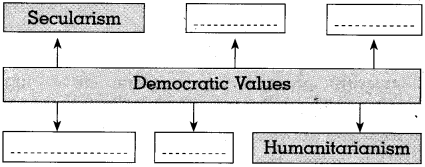
Answer:
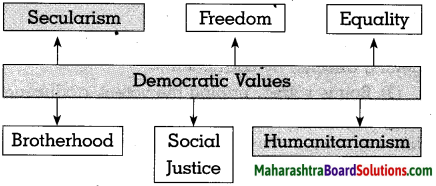
(2)
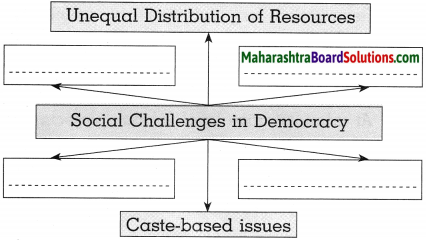
Answer:
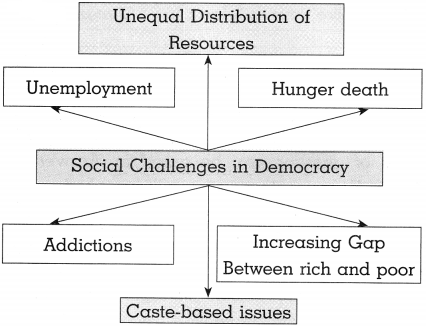
![]()
(3)

Asnwer:
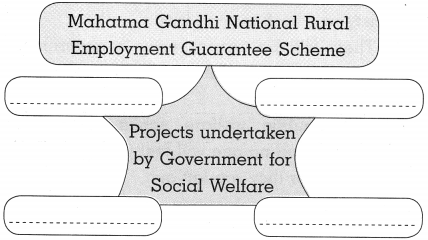
(4)
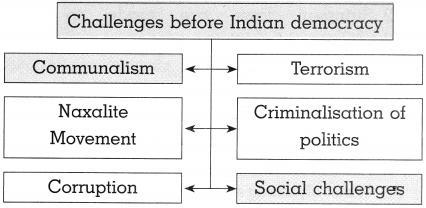
Answer:

![]()
Question 10.
Answer the following questions in brief:
(a) What challenges are faced at global level by democracy?
Answer:
The following challenges are faced by democracy at global level:
- Many democratic countries in the world face the threat of military regime.
- It becomes important to propagate democracy which safeguards people’s rights and freedom.
- All-inclusive democracy is real democracy which should be adopted and practised instead of adopting just political form of democracy.
(b) What improvements are required for democracy to be deep rooted?
Answer:
The following improvements are required for democracy to be deep rooted:
- Values like freedom, equality, fraternity, justice, peace and humanitarianism should be practised and nurtured by all sections in the society.
- Autonomy should be given to various social organisation and assimilqje all the sections of the society.
- Empowerment to the citizens, free and fair elections and independent judiciary is necessary.
- Adoption of a form of democracy which gives preference to public welfare.
(c) What measures are adopted by India to strengthen democracy?
Answer:
In order to strengthen democracy following measures are adopted by India:
- Decentralisation of power.
- Reservation for minorities and women so that they get a share in power.
- The values of liberty, equality, secularism and social justice adopted by our Constitution.
- At administrative level various projects like Education for all, Clean Bharat campaign.
- Gram Samruddhi Yojana, Mahatma Gandhi National Rural Employment Guarantee Scheme are undertaken.
Question 11.
Give your opinion:
(a) What is your opinion about participation of people in various undertakings of the government?
Answer:
- There will be change in the public policies of the government.
- There will be interaction between all sections of society and exchange of ideas.
- There will be transparency in government administration and problems like corruption will be tackled.
- More public welfare schemes will get implemented and no one will feel that injustice is done to them or they are left out.
![]()
(b) Are internal elections held by political parties?
Answer:
- It is mandatory to hold internal elections in a political party.
- Elections are held for various posts like president, treasurer and secretary.
- Elections are held after every 3 years as per the niles laid down by the Election Commission of Itdia.
- The paity which does not abide by the rule loses recognition.
- Because of such elections, there can never be dominance of any single person on a party.
- Democracy sustains within the party. In Indian democracy the internal elections are held by all the parties regularly.
- Another challenge before democratic nations is to ensure that democracy becomes deep rooted.
- Freedom, equality, fraternity and justice, peace, development and humanitarianism are the values that should be practiced at all levels of the society.
- The mass support for this purpose can be gathered only through democratic means.
(c) In spite of economic reforms China accepted dominance of only one party. Is China a democratic nation?
Answer:
- After the Communist revolution in 1948 China became a republic.
- After the formation of the republic, the Communist party of China became a dominant party.
- All the offices in the party are elected through internal elections.
- But in practice, there is dictatorship of the Communist party. Democracy is for namesake in China.
- In such a situation, the people do not enjoy freedom as in true democracy.
- However, China accepted economic reforms and became part of World Trade Organization.
- Another challenge before democratic nations is to ensure that democracy becomes deep rooted.
- Freedom, equality, fraternity and justice, peace, development and humanitarianism are the values that should be practiced at all levels of the society.
- The mass support for this purpose can be gathered only through democratic means.
(d) Do you think there should be family monopoly in politics?
Answer:
- There is no place for family monopoly in politics.
- The elected representatives serve the people till their term lasts.
- People vote out the inefficient representatives out of power in next election.
- If there is monopoly of one family, the perspective of democracy becomes narrow, common people cannot share power.
- If any inefficient heir comes to power, he or she could be a great loss for the party, people as well as the nation.
- Family monopoly in politics is a major problem before democracy in India.
- Monopoly of just one family in politics reduces democratic space. Common people cannot participate in the public sector.
![]()
Hence there should be no family monopoly in politics.

